Common name: eucalyptus, gum tree
Scientific name: Eucalyptus sp.
Family: Myrtaceae
Origin: non-native
Pleasant smelling, antiseptic, highly flammable. Eucalyptus might be the favourite of koalas in its native Australia, but in the UK it is insects which are drawn to its rich oil.
Common name: eucalyptus, gum tree
Scientific name: Eucalyptus sp.
Family: Myrtaceae
Origin: non-native
Eucalyptus can vary in form from a short shrub to a tall, evergreen tree. The bark is a blue-grey colour and peels off in strips to reveal yellow patches underneath. Sometimes, a red resin exudes through breaks in the bark, hence the tree’s other name – the gum tree.
Look out for: young leaves that are usually stemless and rounded. Adult leaves are long and stalked. When crushed, leaves have a distinctive smell. Flowers look like tassels of stamens, opening a year after buds are formed.
Identified in winter by: its evergreen leaves which are present year-round.
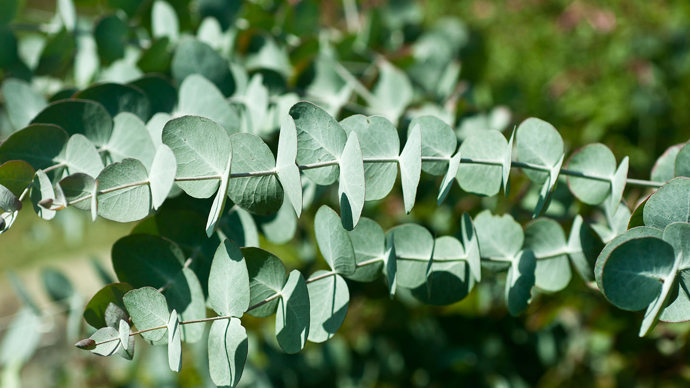
Credit: Organica / Alamy Stock Photo
Best identified by the blue-green adult leaves that are long and slender and hang downwards from single stalks. Juvenile leaves on younger trees are blue, round and unstalked. Eucalyptus oil comes from the adult leaves which secrete the unmistakable scent when crushed.
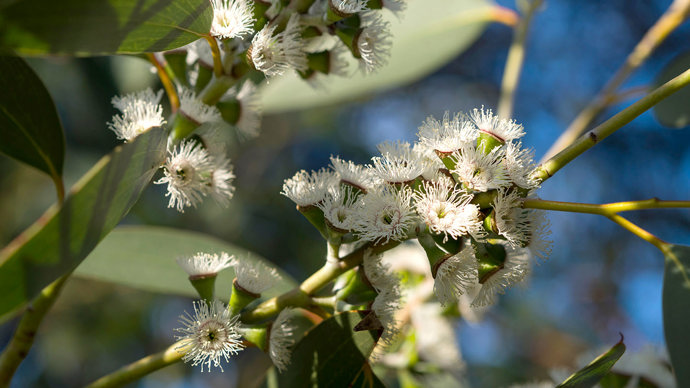
Credit: Andrew Kearton / Alamy Stock Photo
Flower buds are cone-shaped and grouped together in sets of three on short stalks. Each bud has a round cap on top called the calyptus, which falls off to reveal the fluffy white or red flower stamens that are so attractive to bees.
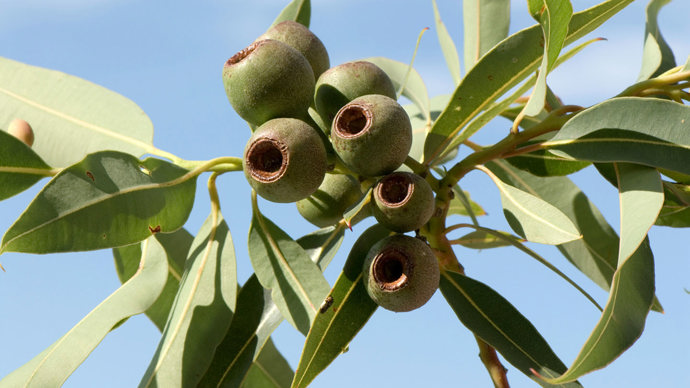
Credit: 42pix Premier / Alamy Stock Photo
In the middle of the flower a hard, woody pod develops that opens to release seeds.
Two of the most common species of eucalyptus in the UK – the cider gum (Eucalyptus gunnii) which can be found in great numbers on the Essex coast, and the Tasmanian blue gum (Eucalyptus globulus) which is the main source of eucalyptus oil and grows plentifully in Cornwall and Ireland.
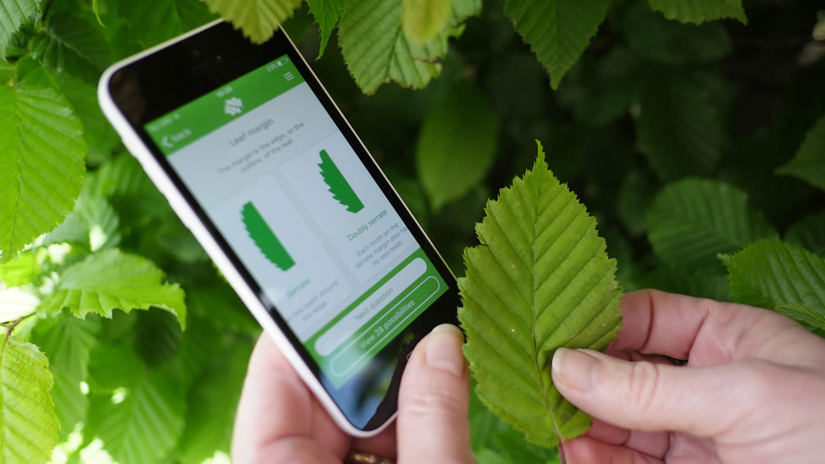
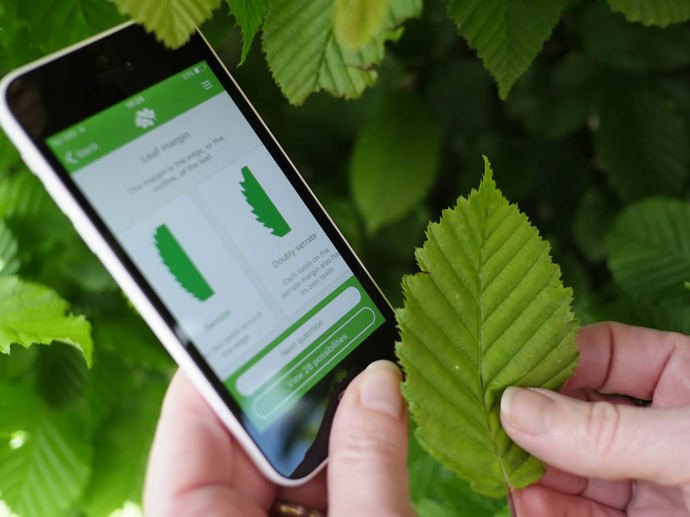
Download our free Tree ID app for Android and iPhone to identify the UK's native and non-native trees. It's an A-Z tree guide in your pocket.
These aromatic trees are native to Australia and only about 12 of the many species grow in the warmer regions of Europe. Eucalyptus are fast-growing trees and are widely planted in gardens, parks and plantations. It has become naturalised in woodland and on roadsides in southeast and lowland England. Some species occasionally regenerate from seed in the UK.
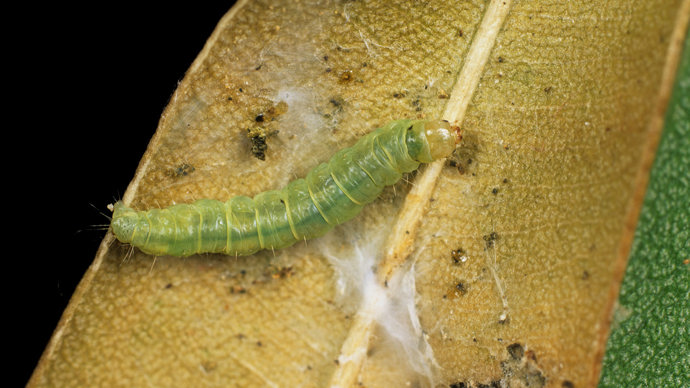
Credit: Nigel Cattlin / naturepl.com
Eucalyptus attracts bees and other pollinating insects. Leaves have a high level of essential oils which are difficult for most other animals to process.
Australian indigenous populations use eucalyptus for spiritual cleansing. Eucalyptus oil is widely known for its medicinal properties.
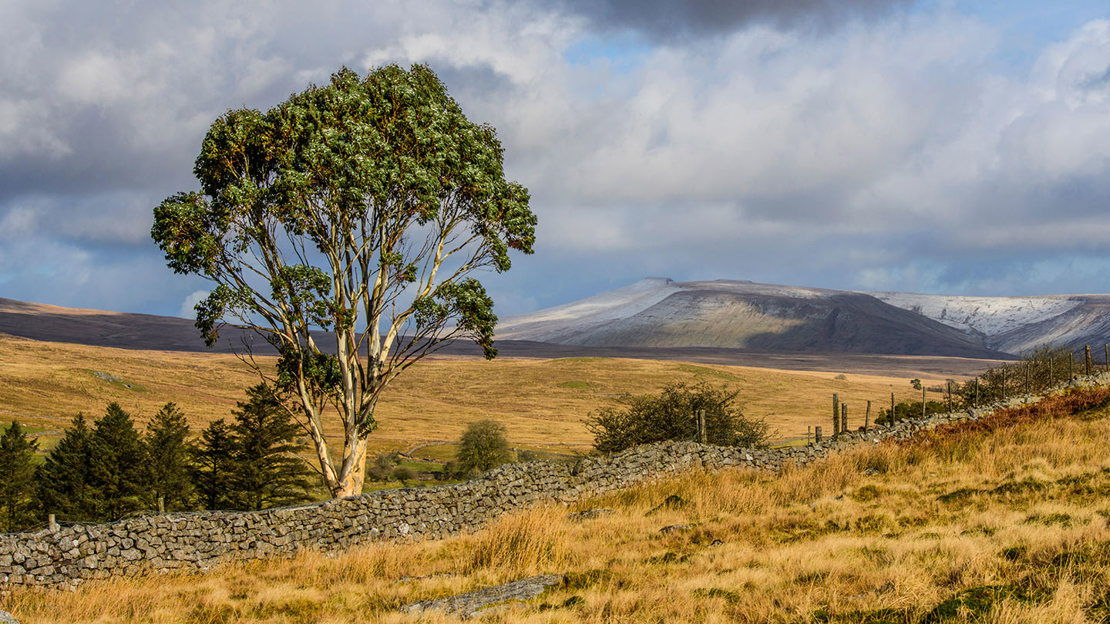
Eucalyptus oil is highly flammable, and fires travel easily through large plantations, especially in Australia where the weather is hot. However, reports that eucalyptus trees can spontaneously combust are untrue.
Australian indigenous populations had many uses for eucalyptus trees. They used the wood and bark to make tools, spears, shields and musical instruments. Leaves of certain species were soaked in water to make a healing tea. The Kulin people made water bowls called tarnuks from the tree. The Murray River tribes used the bark to make canoes.
Oil from the leaves of eucalyptus trees is now used all over the world for its antiseptic qualities. It's also used to help clear congestion and colds, and appears in some topical creams for arthritis and insect repellents.
Its wood is used for timber and as pulpwood for paper production.
There are not many threats to eucalyptus but it can suffer from eucalyptus gall wasp. The larvae of the gall wasp develop inside raised galls on the leaves which can result in excessive leaf fall.